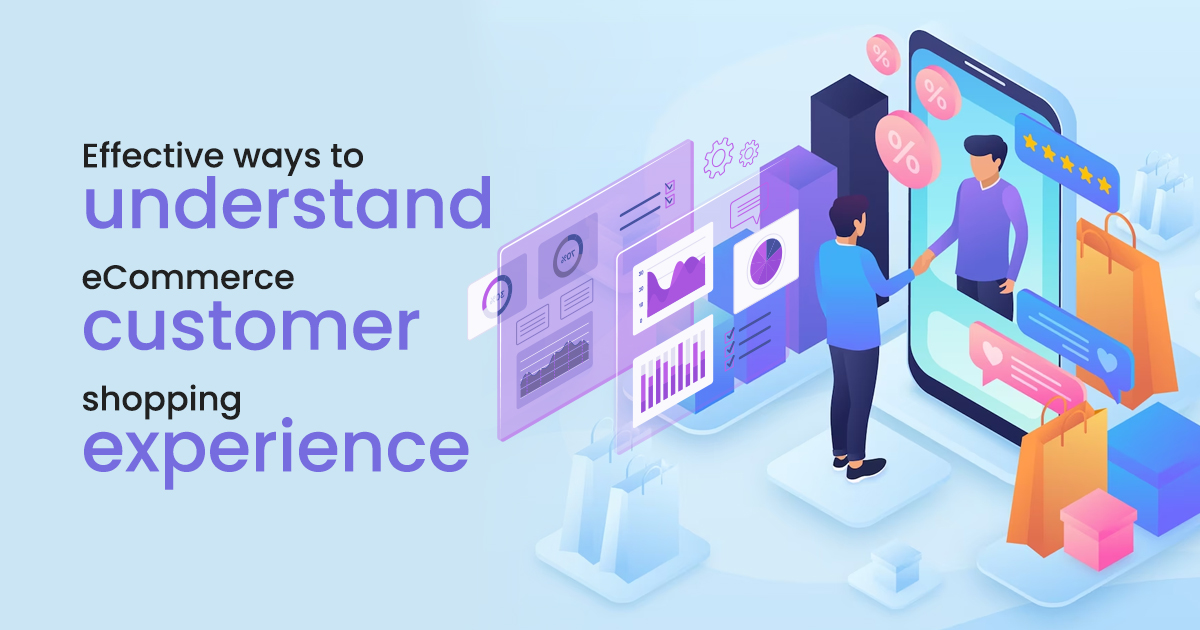Effective Ways To Understand eCommerce Customer Shopping Experience

In the competitive world of eCommerce, understanding the customer shopping experience is vital for success. By gaining insights into customer behaviors, preferences, and pain points, businesses can optimize their strategies, enhance the shopping journey, and increase customer satisfaction.
In this article, we will explore effective ways to understand the eCommerce customer shopping experience and provide actionable tips to improve your understanding of your customers.
1. Conduct User Research
User research is a fundamental step in understanding the eCommerce customer shopping experience. Conduct qualitative and quantitative research to gather insights into customer motivations, behaviors, and expectations.
Utilize methods such as surveys, interviews, focus groups, and usability testing to gain a deep understanding of your target audience. Analyze the data collected to identify patterns, pain points, and areas for improvement.
2. Analyze Website Analytics
Website analytics provide valuable data about customer behavior on your eCommerce platform. Utilize tools like Google Analytics to track metrics such as page views, bounce rates, conversion rates, and time spent on different pages.
Analyzing this data helps you understand how customers navigate through your website, which pages receive the most engagement, and where they drop off in the conversion process. Use these insights to optimize your website’s design, layout, and user flow.
3. Implement Customer Feedback Mechanisms
Actively seek customer feedback to gain insights into their shopping experiences. Utilize various feedback mechanisms, such as customer surveys, post-purchase feedback emails, or live chat support. Ask specific questions about their experience, satisfaction levels, and areas they believe could be improved.
Additionally, monitor and analyze customer reviews and ratings to identify recurring themes and sentiments. Customer feedback is invaluable in understanding pain points and implementing necessary improvements.
4. Utilize Heatmap & Session Recording Tools
Heatmap and session recording tools provide visual representations of customer interactions on your website. Heatmaps display areas of high engagement, such as where customers click or scroll the most.
Session recordings capture individual customer journeys, allowing you to observe how they navigate through your website. These tools help identify usability issues, areas of confusion, or friction points in the shopping experience. Leverage these insights to optimize your website’s design and user interface.
5. Embrace Social Listening
Social media platforms offer a wealth of information about customer experiences and sentiments. Monitor brand mentions, hashtags, and industry-related conversations on social media to gain insights into what customers are saying about your brand and competitors.
Social listening tools can help identify trends, common pain points, and areas for improvement. Engage with customers directly to address their concerns, provide assistance, or gather further feedback. Social listening is a valuable source of real-time customer insights.
6. Implement A/B Testing
A/B testing involves comparing two versions of a webpage or element to determine which performs better. By conducting A/B tests on different aspects of your eCommerce website, such as product descriptions, call-to-action buttons, or checkout processes, you can gather data on customer preferences and behaviors.
Test one variable at a time and measure the impact on key metrics like conversion rates. A/B testing provides concrete data-driven insights to improve the shopping experience based on customer preferences.
7. Monitor Customer Support Interactions
Customer support interactions are valuable opportunities to understand the customer shopping experience. Analyze customer support interactions, such as emails, live chats, or phone calls, to identify recurring questions, issues, or complaints.
These interactions offer insights into pain points, confusion, or barriers that customers face while shopping on your website. Use this information to refine your website’s content, FAQs, or product information to address common customer concerns.
8. Engage in Customer Journey Mapping
Customer journey mapping involves visualizing the entire customer journey from initial awareness to post-purchase interactions. Create detailed maps that outline touchpoints, emotions, and pain points at each stage of the journey.
This exercise helps you understand the holistic shopping experience and identify opportunities to enhance customer satisfaction. Customer journey mapping allows you to align your strategies and optimize each touchpoint to create a seamless and delightful experience.
Conclusion
Understanding the eCommerce customer shopping experience is crucial for optimizing strategies, improving customer satisfaction, and driving business growth. By conducting user research, analyzing website analytics, implementing customer feedback mechanisms, utilizing heatmap and session recording tools, embracing social listening, conducting A/B testing, monitoring customer support interactions, and engaging in customer journey mapping, you can gain valuable insights into your customers’ needs and preferences.
Use these insights to tailor your eCommerce strategies, optimize the shopping journey, and exceed customer expectations. Continuously evaluate and improve your understanding of the customer shopping experience to build long-lasting customer relationships and drive success in the competitive eCommerce landscape.
Willing to dominate the eCommerce landscape?
Partner with our expert Jaipur-based website development team and witness the skyrocketing growth of your online business! From eye-catching designs to seamless functionality, we craft websites that captivate your audience and drive conversions. Take control of your digital destiny and embark on your eCommerce journey to success.
Subscribe to our Blog
Read our newly created blogs delivered straight to your inbox.


